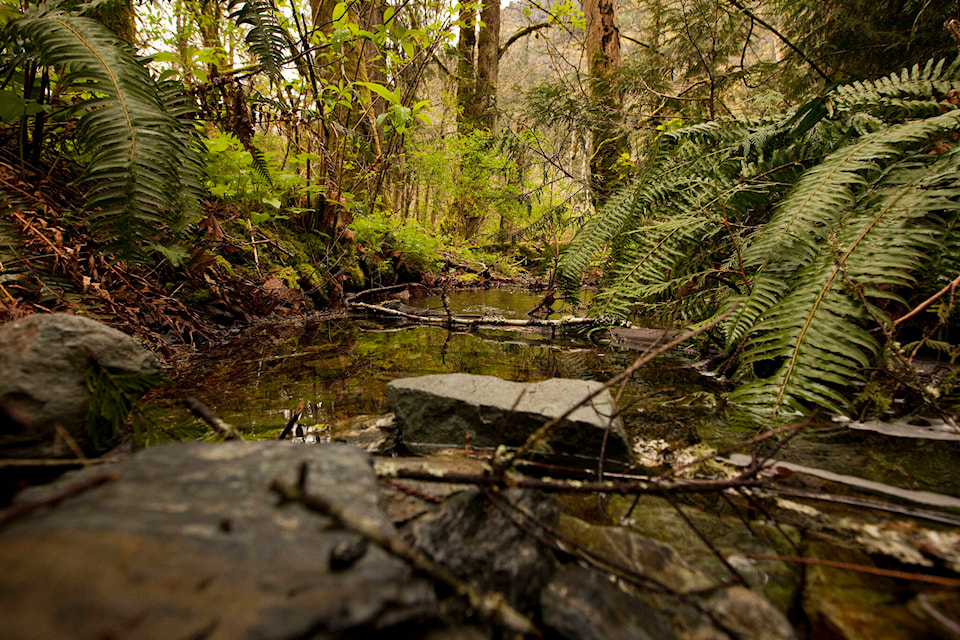The mass salmon die-offs that plagued rivers on the mainland likely won’t be seen in Greater Victoria rivers, thanks to the rain and a boost in water supply from nearby water sources.
On B.C.’s central coast, thousands of salmon died off in the Neekas River, about 20 kilometres north of Bella Bella earlier in October, after drought conditions during the summer warmed and lowered water levels.
“In past years it has been half-a-dozen or a dozen but now we are seeing tens of thousands,” Heiltsuk Nation conservation manager William Housty told Black Press Media in a previous interview.
Pink and chinook salmon that migrate up mainland rivers spawn earlier in the year and are therefore more susceptible to high heat than the chum and coho salmon that swim up those in Greater Victoria like the Goldstream River, according to Peter McCully, the technical advisor at the Goldstream Fish Hatchery.
“They’re not fighting those warm conditions quite as much,” he said.
While it’s still early – the spawn peaks around Nov. 12 to 14, McCully said – early numbers are promising and the Goldstream Hatchery is hopeful it’ll meet its egg-gathering target for both coho and chum.
ALSO READ: Rainfall statements issued for much of Vancouver Island
The recent heavy rain has been a boon to water levels, with the Capital Regional District also helping the situation by turning on the tap from its alternate water supply, the Goldstream Lakes system. The Goldstream Lakes system is not currently in use for water supply and is made up of Butchart Lake, Lubbe Lake, and Goldstream Lake.
In a usual year, the CRD releases 3.0 Imperial million gallons/day (mgd) from the Goldstream Lakes system around this time of year. With this summer’s drought, the Goldstream Hatchery asked the CRD to up the amount of water it lets flow through, with the CRD increasing the release rate to 8.0 mgd for 10 days, according to Andy Orr, CRD spokesperson.
“There is currently adequate storage (81 per cent) in this system to account for this additional release and rainfall will help replenish the Goldstream Lakes system,” Orr said in an email.
With more likely to come in the coming months, that’ll help further boost water levels which are still low, said McCully, although it will take several days of repeated rain before the soil becomes saturated enough to absorb water properly.
“We’re in a much better position but we’re not out of the woods yet,” said McCully.
Water levels in the Sooke Reservoir, the CRD’s primary supply, have also been helped by the recent heavy rain. The Sooke Lake Reservoir level flattened out on Oct. 26 at around 69 per cent full and is slowly starting to rise, according to Orr. Rainfall events expected over the upcoming weekend will likely continue the increase in reservoir levels, he added.
~ With files from Monica Lamb-Yorski.
ALSO READ: Historic drought behind B.C. wildfires, salmon die-off could continue, experts say
ALSO READ: ‘Flabbergasting’ lack of rain has returning salmon dying in droves on B.C. central coast
bailey.moreton@goldstreamgazette.com
Like us on Facebook and follow us on Twitter.



